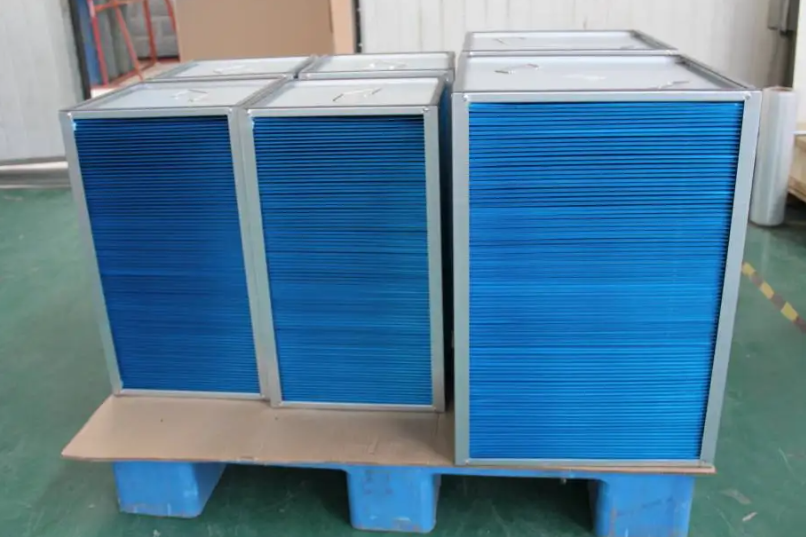A crossflow heat exchanger works by allowing two fluids to flow at right angles (perpendicular) to each other, typically with one fluid flowing through tubes and the other flowing across the outside of the tubes. The key principle is that heat is transferred from one fluid to the other through the walls of the tubes. Here's a step-by-step breakdown of how it works:
Components:
- Tube Side: One of the fluids flows through the tubes.
- Shell Side: The other fluid flows over the tubes, across the tube bundle, in a direction perpendicular to the flow of the fluid inside the tubes.
Working Process:
- Fluid Inlet: Both fluids (hot and cold) enter the heat exchanger at different inlets. One fluid (let's say the hot fluid) enters through the tubes, and the other fluid (cold fluid) enters the space outside the tubes.
- Fluid Flow:
- The fluid flowing inside the tubes moves in a straight or slightly twisted path.
- The fluid flowing outside the tubes crosses over them in a perpendicular direction. The path of this fluid can be either crossflow (directly across the tubes) or have a more complex configuration, like a combination of crossflow and counterflow.
- Heat Transfer:
- Heat from the hot fluid is transferred to the tube walls and then to the cold fluid flowing across the tubes.
- The efficiency of heat transfer depends on the temperature difference between the two fluids. The larger the temperature difference, the more efficient the heat transfer.
- Outlet: After heat transfer, the now cooler hot fluid exits through one outlet, and the now warmer cold fluid exits through another outlet. The heat exchange process results in a temperature change in both fluids as they flow through the heat exchanger.
Design Variations:
- Single-pass crossflow: One fluid flows in a single direction across the tubes, and the other fluid moves through the tubes.
- Multi-pass crossflow: The fluid inside the tubes can flow in multiple passes to increase the contact time with the fluid outside, improving heat transfer.
Efficiency Considerations:
- Crossflow heat exchangers are generally less efficient than counterflow heat exchangers because the temperature gradient between the two fluids decreases along the length of the heat exchanger. In counterflow, the fluids maintain a more consistent temperature difference, which makes it more effective for heat transfer.
- However, crossflow heat exchangers are easier to design and are often used in situations where space is limited or where fluids need to be separated (like in air-to-air heat exchangers).
Applications:
- Air-cooled heat exchangers (like in HVAC systems or car radiators).
- Cooling of electronic equipment.
- Heat exchangers for ventilation systems.
So, while not as thermally efficient as counterflow heat exchangers, crossflow designs are versatile and commonly used when simplicity or space-saving is important.






